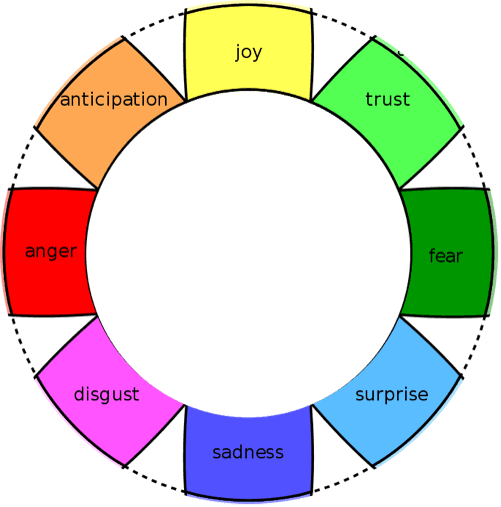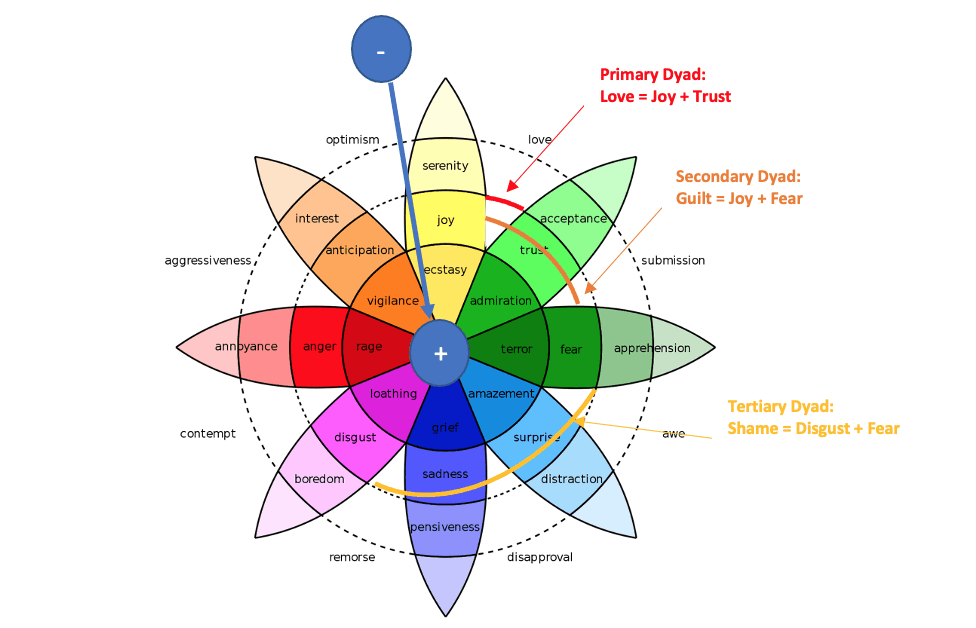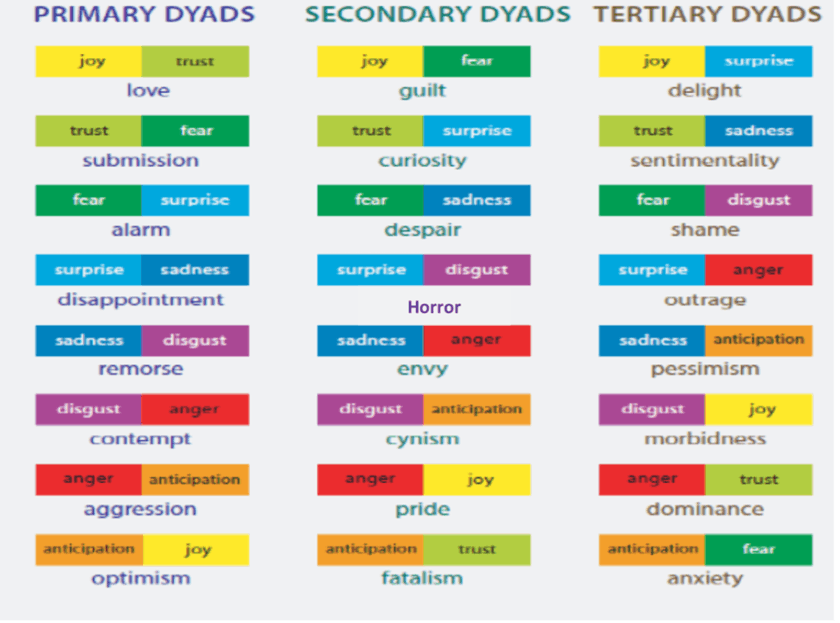
Naming the emotions that we feel is a difficult exercise for most of us. During the 1980s, Robert Plutchik developed a model which was extremely simple to understand and easy to use. Here it is for your reference.
8 basic emotions:
According to Robert Plutchik, 8 basic emotions would have helped humans survive as part of the evolutionary process.

Robert Plutchik placed these 8 basic emotions on a wheel:

Each basic emotion faces its opposite emotion:
Emotions vary in intensity:
Robert Plutchik created a "wheel of emotions" to help us better visualize the variation in the intensity of emotions

Primary emotions can combine to create new emotions
Robert Plutchik defined 3 possible levels of combination:

Designed with Mobirise web templates